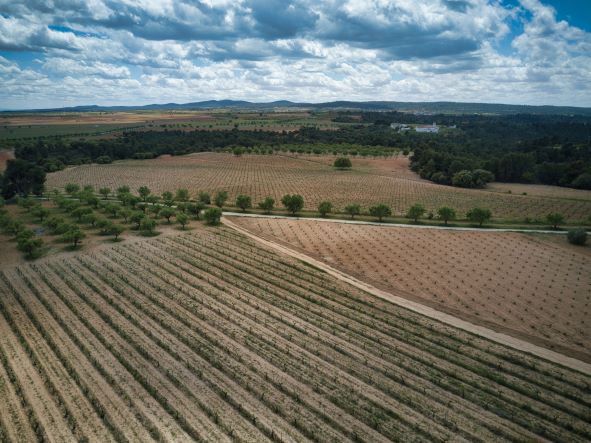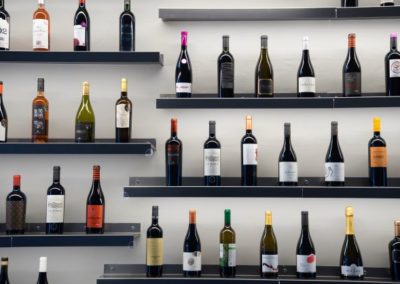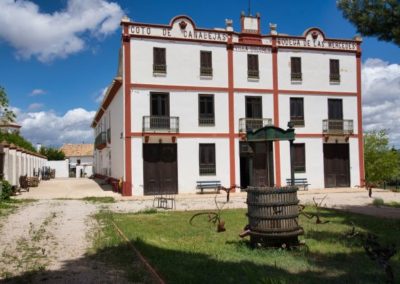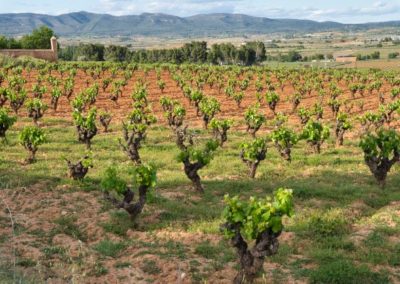Vineyards and wine in the Utiel-Requena plain region
DOI: 10.5281/zenodo.7607949
Inland and Coastal Countryside and Plains Model
Author: Francisco Higón Tamarit
Overview of SAMUTER
The analysis of the Multifunctional and Territorialised Agri-food System of the wine industry in this territory is based on the interaction between the primary sector (agriculture) and a specific category of agri-food industry, the wine industry.
1. Environmental sustainability
In our reference region, vineyards are one of the main agricultural activities in almost all of its municipalities. The area with the least involvement in this activity is the municipality of Chera. On the other hand, the municipality of Siete Aguas, which belongs to another comarca (Hoya de Buñol), forms a central part of the SAMUTER analysed.
The area can be described as a high plateau area with a considerable height above sea level.
There are many environmental protection figures in the area, specifically the statistics of the Natura 2000 Network include: 2 Sites of Community Importance (SCI), 4 Special Areas of Conservation (SAC) and 3 Special Protection Areas for Birds (SPA). Among these areas we can highlight the Hoces del Cabriel, the Sierra de Martés – Muela de Cortes or the Lavajos de Sinarcas. Moreover, the vineyard landscape is a very characteristic landscape that changes according to the season and presents markedly different aspects, with the green exuberance of spring and summer, the colour palette of autumn and the lean winter landscape, with the vines bare of their foliage.
2. Territoriality and agri-environmental policies
The region of La Plana de Utiel-Requena is located on a small plateau, with an almost circular perimeter – apart from the “projections” that represent the municipalities of Sinarcas and Chera – and a diameter of approximately 45 kilometres. Moreover, it ranges from northwest to southeast, between 900 and 600 metres above sea level, forming a plain that takes its name from the name of the region, as well as being the only one with this configuration among the inland regions, especially if we compare it with the neighbouring regions of Los Serranos and the Cofrentes-Ayora Valley, which are mountainous.
This region is made up of 9 municipalities which are (in alphabetical order): Camporrobles, Caudete de las Fuentes, Chera, Fuenterrobles, Requena, Sinarcas, Utiel, Venta del Moro and Villargordo del Cabriel. A territory where, in addition to two Designations of Origin (Utiel-Requena and Cava), we also find five single-estate wines (el Terrerazo, los Balagueses, Chozas Carrascal, Pago Tharsys and Vera de Estenas) and a not inconsiderable number of producers outside the framework of the Protected Designations of Origin. The latest official figures for hectares registered in the Utiel-Requena Designation of Origin at the end of 2021 were 33,192 ha, although only 32,013 ha were in production. The total vineyard area in the region is 34,444 hectares, 66% of which is unirrigated and 34% irrigated.
3. Relations between production, processing, marketing and consumption
The agri-food system of vineyards and wine is deeply embedded in the social and economic structure of the region, perhaps with the sole exception of the municipality of Chera, where it plays a much more modest role. Up to 4,898 winegrowers are identified in the region, who supply their grapes to more than 60 wineries, of which 57 are bottling wineries registered in the D.O. Utiel-Requena. Some of these wineries (7 to be precise) are also registered in the D.O. Cava, that is to say, they produce wines in both D.O. Cava and D.O. Utiel-Requena. Others are also registered as Vino de Pago, four of them, and there is a fifth one that is only Vino de Pago but does not belong to the D.O. Utiel-Requena. Finally, there is a small number of wineries that are outside any protected designation of origin, i.e. they make what has traditionally been called table wine.
It is important to note that wine production is one of the highest in Spain, with 225,123 hectolitres produced in 2020, of which 29% remained on the Spanish domestic market and 71% ended up on foreign markets. Production is mainly red wines (79.6%), compared to only 10.5% of white wines and 9.9% of rosé wines. The European Union is the main market for the region’s wines, absorbing more than 65% of the wines marketed abroad.
4. Good governance
The Agri-Food System of the vine and wine of the Plana de Utiel-Requena Region is fundamentally articulated around the Utiel-Requena Designation of Origin, whose main regulation is found in Order 4/2011, of 16 November of the Regional Ministry of Agriculture, Fisheries, Food and Water, Fisheries, Food and Water, which modifies Order 2/2011, of 24 August, of the Regional Ministry of Agriculture, Fisheries, Food and Water, which approves the regulations and specifications of the Utiel-Requena Protected Designation of Origin and its regulatory council.
The area of the region in which cavas can be produced, specifically only in the municipality of Requena, also plays a crucial role. In this case, the main regulation is to be found in the Regulations of the ‘Cava’ Designation of Origin and its Regulatory Council, approved by Order of the Ministry of Agriculture, Fisheries and Food of 14 November 1991 and amended by successive Orders and the corresponding specifications.
Finally, we cannot forget the different resolutions approving the five Vino de Pago wines previously mentioned.
Two associations present in the area also play an essential role in the structuring of the agri-food system with the local society, such as the Mancomunidad del Tejo and, especially, the Mancomunidad del Interior Tierra del Vino. Furthermore, the latter association and the Regulatory Council of the D.O. Utiel-Requena are behind the birth of the Territorio Bobal Association, which is committed to the development of wine culture. Finally, the role of the RURABLE Local Action Group, especially focused on achieving sustainable development for the region and neighbouring regions, is particularly active and is very relevant to understanding how to improve governance in the area.





Recent Comments